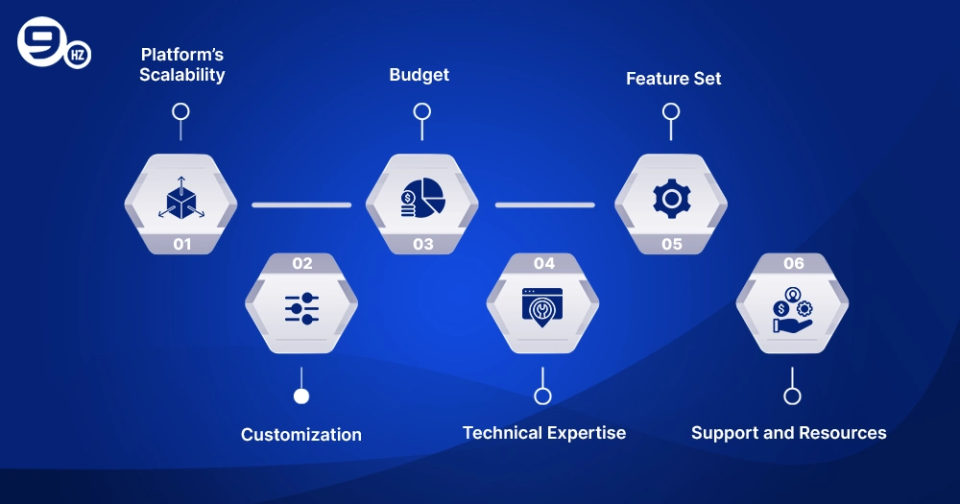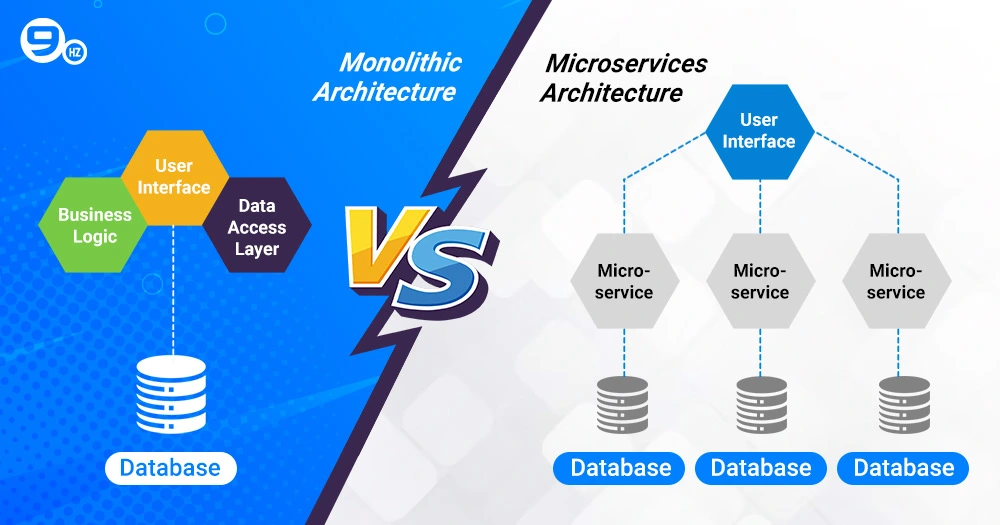WooCommerce vs Shopify? For many US businesses, this dilemma has sent their minds spinning! This is undoubtedly one of the most important eCommerce decisions to make in 2025. Both platforms leverage thousands of online stores, but the right choice can either accelerate your overall growth trajectory or hinder your success with limited features, hidden costs, or missed opportunities!
Here’s how the data stacks up –
- Shopify supports more than 4.8 million stores globally, with a strong footprint in the US and North America (2.67 million in the US). In 2024, Shopify facilitated over $292.27 billion in GMV (gross merchandise value) and accounted for around 30% of all US DTC (direct to consumer) eCommerce traffic in the United States (BuiltWith, Shopify Q4 2024).
- WooCommerce, on the other hand, powers around 35% of the world’s eCommerce sites (4.53 million globally, including 422,000 in the US). It also largely benefits from its native connection with WordPress – a platform that presently runs more than 43.4% of all websites globally (W3Techs, Q3 2025).
So, which platform perfectly aligns with your goals, budget, and growth plans?
Let’s break it down.
What is Shopify? – A Quick Overview
Shopify refers to a fully hosted ecommerce platform – a top-trusted solution for US entrepreneurs and brands, aimed at launching, scaling or managing their online business without any tech hiccups or hassle.
Core Strengths of Shopify
- Simplicity: Launch your Shopify store in just minutes – no tech setup or coding is required!
- All-in-one toolkit: Comes with built-in web hosting, custom domain setup, PCI and SSL compliance (secure checkout), insightful analytics, robust marketing features, and round-the-clock support.
- Omnichannel selling: Reach customers directly through your website, TikTok, Amazon, eBay, Instagram, or even in person with POS.
- Expansive app ecosystem: The Shopify app store offers more than 8,000 integrations for inventory, customer reviews, email marketing, dropshipping, automation, accounting, and more.
- Design flexibility: Access 120+ professionally built Shopify themes, all fully responsive and sales-optimized.
Scalable plans Shopify:
From Shopify Plus for high-volume enterprises to the very basic Shopify plan ($39/mo), there’s a perfect solution for every stage of business – with no hindrance to traffic or growth.
US brands love Shopify not only because it performs well, but also because it works simply – no patching, no server setup, and zero stress over PCI audits.
A top-trusted Shopify development company, supported by the expert agencies and partner network of Shopify, can build any custom experience you imagine – from a high-volume DTC powerhouse to a premium fashion boutique.
What is WooCommerce?
WooCommerce refers to the most trusted WordPress plugin for eCommerce, running millions of online stores across the world – particularly in the US.
Core Strengths of WooCommerce
- Unmatched flexibility: Provides you with a full control to shape your store’s design, checkout flow, and database.
- Open-source freedom: Free to get started, with WooCommerce themes as well as WooCommerce extensions (plugins) available for just about any integration or feature you can think of.
- SEO-friendly by design: Works effortlessly with the world’s leading SEO plugins such as Rank Math, AIOSEO, and Yoast for granular control of your site’s technical SEO.
- WordPress synergy: Do you already have a WordPress site? Do you publish blogs every day? If yes, then let WooCommerce top your priority.
- Cost-efficient to launch cost: The core plugin is completely free of cost! You need to just cover your preferred SSL, hosting, and any premium add-ons you pick.
But, unlike Shopify, you will have to handle your web hosting, software maintenance, SSL certificate, backups, and website security checks. You are free to pick any hosting provider, from WP Engine to Kinsta and Bluehost, though the overall quality of support might differ.
Grow Smarter, Sell Faster— Hire Our Shopify Developers Now.
WooCommerce vs Shopify: The Ultimate Feature Comparison
| Feature | Shopify | WooCommerce |
|---|---|---|
| Hosting | Fully hosted (SSL, PCI, or backups included) | Self-hosted; you choose a hosting provider |
| Setup Speed | Minutes (guided onboarding, no coding) | 1–3 hours (WordPress plugins, themes, setup, config) |
| Ease of Use | Absolutely beginner-friendly | Some tech expertise is required |
| Themes | 120+ official Shopify themes (both free and paid) | 1,300+ WooCommerce themes + every WordPress theme |
| App/Plugin Store | 8,000+ Shopify apps (curated) | 800+ WooCommerce extensions, 75,000+ WordPress plugins |
| Payment Gateways | 100+ (incl. Shopify Payments, PayPal, Apple Pay, etc.) | 80+ (Amazon Pay, Stripe, Square, PayPal, etc.) |
| Transaction Fees | 0–2% (none if using Shopify Payments) | None (just gateway/processor fees) |
| Omnichannel | Yes (IG, Amazon, TikTok, POS) | Yes (with extensions and integrations) |
| SEO | Mobile-first, strong, and auto-structured | Advanced, with complete plugin support and code access |
| Support | Available through 24/7 live chat, email, phone, knowledge base, and Shopify team | Community, forums, some managed hosts, developer companies |
| Security | Includes built-in SSL, PCI, fraud detection, and automated | DIY: Pick a host, maintain SSL, and track plugins |
| Scalability | Seamless, managed upgrades, zero bandwidth limits | Host-dependent; powerful but needs tuning |
| Internationalization | Yes (multi-currency, multi-language) | Yes (with plugins, WPML, and custom code) |
| Perfect For | Fast launch, simplicity, and non-tech founders | Deep custom, content-driven, unique business logic |
Key Takeaways and Real-World Differences
- Shopify is perfect for a “plug and play” eCommerce – absolutely no hosting hassles, zero setup stress.
- WooCommerce, on the other hand, brings a full creative freedom to the table. However, it also puts every tech responsibility on your plate!
Pro tip: If your US team needs to go live within a span of just a few days, Shopify is always the faster route. But, if you want to customize your checkout flows, serve a specialized market or invest in highly advanced content strategies, WooCommerce always wins!
Shopify vs WooCommerce – Pros and Cons Breakdown
Shopify Advantages and Drawbacks
| Pros | Cons |
|---|---|
| No coding, quick launch, unified platform | Monthly fees can add up owing to costs associated with premium themes, apps.) |
| 24/7 real-time assistance from theShopify team | Transaction fees, unless you’ve enabledShopify Payments |
| 120+Shopify themes (fully mobile-optimized) | Less control over backend/ personalized server setup |
| PCI compliance, SSL, security, and backups are automated | Some cutting-edge features need higher-tier plans |
| Extensive US agency and developer ecosystem | Limited blog/CMS capabilities vs WordPress |
WooCommerce Benefits and Setbacks
| Pros | Cons |
|---|---|
| 100% customizable and open-source | Needs technical expertise for premium outcomes |
| No platform transaction fee is required | SSL, hosting, and support can be handled on your own |
| Over 1,300 WooCommerce themes and unlimited plugins | Less control over backend/ personalized server setup |
| Integrates with the best US tools and gateways | Continuous maintenance, backups, and updates are required |
| Seamless blogging and SEO setup | It could be a bit tricky for non-technical founders |
Maximize Sales With a Custom Shopify Store
Which Platform is Best for Your Business in 2025?
To be honest, there’s no one-size-fits-all or cookie-cutter answer in the debate around WooCommerce vs Shopify. Your most suitable platform mainly depends on your tech skills, growth aspirations, and business model.
When to choose WooCommerce
- You already have a WordPress site or are compelled to build a content-heavy presence (perfect for US SaaS, bloggers, and publishers.)
- You need tailored functionalities, B2B capabilities, or a fully customized checkout and user experience
- You prefer total ownership over your data, codebase, and the way integrations work (the integrations WooCommerce supports are practically limitless)
- You are aiming for a highly advanced SEO optimization with tools such as Rank Math or Yoast.
- You are comfortable collaborating with agencies, developers, or a highly skilled in-house tech team.
When to choose Shopify
- You are looking to get your Shopify store up and running fast – without any hassle.
- You would rather not deal with SSL, PCI or platform maintenance
- You prefer the concept of steady, manageable monthly costs (whether it’s advanced Shopify or just the basic Shopify plan as your business expands)
- You value round-the-clock support and access to a handpicked selection of apps through Shopify app store
- You are looking to sell across a number of channels – from POS to social media to US retail and beyond!
Factors to Consider Before You Pick an eCommerce Platform
1. Platform’s Scalability
- Without any downtime, Shopify handles hundreds of orders every minute. Big US brands like Allbirds, Heinz, and Staples trust Shopify Plus for Black Friday-level increases
- You can also grow WooCommerce, but only if you pay for high-quality hosting, content delivery networks (CDNs), and technical improvements.
Pro tip: Shopify’s managed infrastructure is the best choice for fast development in the US.
2. Customization Options
- WooCommerce is the best for customization since you can design anything, alter templates, add custom product logic, and connect it to any US SaaS tool.
- You can change a lot with Liquid, Shopify’s templating language, but you might require an advanced Shopify plan or support from a developer to use some of the backend features.
3. Total Cost and Budget
- The rates on Shopify are obvious ($39–$399/month), but they can go up as you add applications, advanced analytics, themes, and premium support.
- You can start for free, but you’ll have to pay for your hosting plan ($5–$35/month), premium WooCommerce themes, plugins ($0–$299 per), and developer time if you require it.
So, always add up the expenses of plugins, apps, and transaction fees for one, two, and three years to minimize budget surprises.
Sell More with Seamless Shopify Solutions
4. Technical Skills and Expertise
- Shopify is built for those who don’t know how to code. Even people who haven’t done it before can easily start and maintain a successful online store.
- WooCommerce is second to none for those with a bit of technical expertise, who have used WordPress before, or can pay developers or designers to help them.
5. Feature Set and Integrations
- Shopify: There are more than 8,000 Shopify apps, that have all been tested for security and compatibility. With just a single click, you can easily install everything from accounting to marketing.
- WooCommerce: There are more than 800 official WooCommerce extensions, besides more than 75,000 WordPress plugins and custom APIs!
The best thing? WooCommerce can work well with multiple services like HubSpot, ShipStation, Printful, and US accounting software like QuickBooks, etc.
6. Support and Resources
- Shopify: 24/7 live support, a large US-based Shopify team, a strong knowledge base, partner agencies, and a forum for the community.
- WooCommerce: The community can help, but some of the finest US hosting (WP Engine, Bluehost, and SiteGround) provide help that is specialized to WooCommerce. Freelancers and big agencies can do complex builds
Conclusion: WooCommerce vs Shopify — The 2025 Verdict!
There is no ultimate winner in this debate of Shopify vs WooCommerce
Shopify is the finest ecommerce platform for business owners that want to get started quickly, focus on sales and marketing, and not have to worry about tech problems. It always delivers you what you want: reliability, outstanding customer service, and quick growth.
WooCommerce is the perfect alternative for skilled content marketers, businesses with complicated catalogs, or US enterprises that need full control, technical SEO, or highly particular capabilities.
In 2025, anyone can help you run a successful online store as long as you choose the correct platform for your needs, team skills, and budget.
If you want to sell, grow, and employ someone else to operate the back end, Shopify is the ideal solution.
If you want to build, own, and keep up with every area of your site, choose WooCommerce!
FAQs
1.WooCommerce vs Shopify: Which one is better?
Both are good! Shopify is excellent for simplicity and support. WooCommerce triumphs for customization and flexibility.
2. Which platform is faster to launch, Shopify or WooCommerce?
Shopify. A US store can go live in under an hour or so with no coding!
3. Do I need coding skills for WooCommerce?
You need no Coding skills for the basic setup. But US brands get more traction with certain WordPress expertise.
4. Out of Shopify or WooCommerce, which is better for SEO in 2025?
WooCommerce! Why? This is due to its granular code access and extensive plugin support.
5. Is WooCommerce more affordable than Shopify in the long run?
For many US merchants, yes! Especially if you use affordable hosting or free plugins.
6. Can I switch from WooCommerce to Shopify without any hassle?
Yes, through migration tools. You can plan for manual tweaks in case your US store is complex.
7. Which platform supports more third-party integrations?
WooCommerce, thanks to API flexibility and a massive WordPress plugin library!
Great Together!










